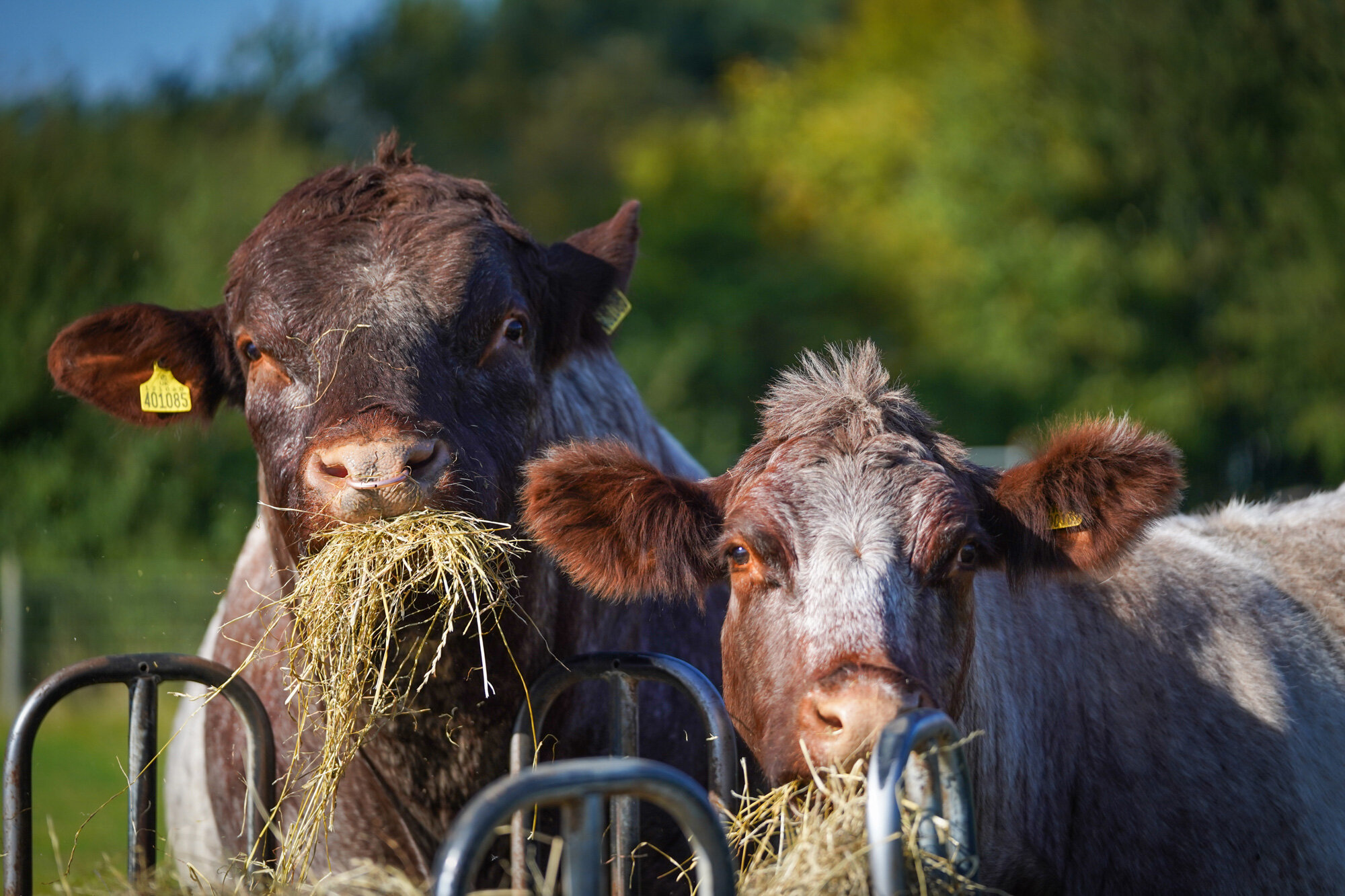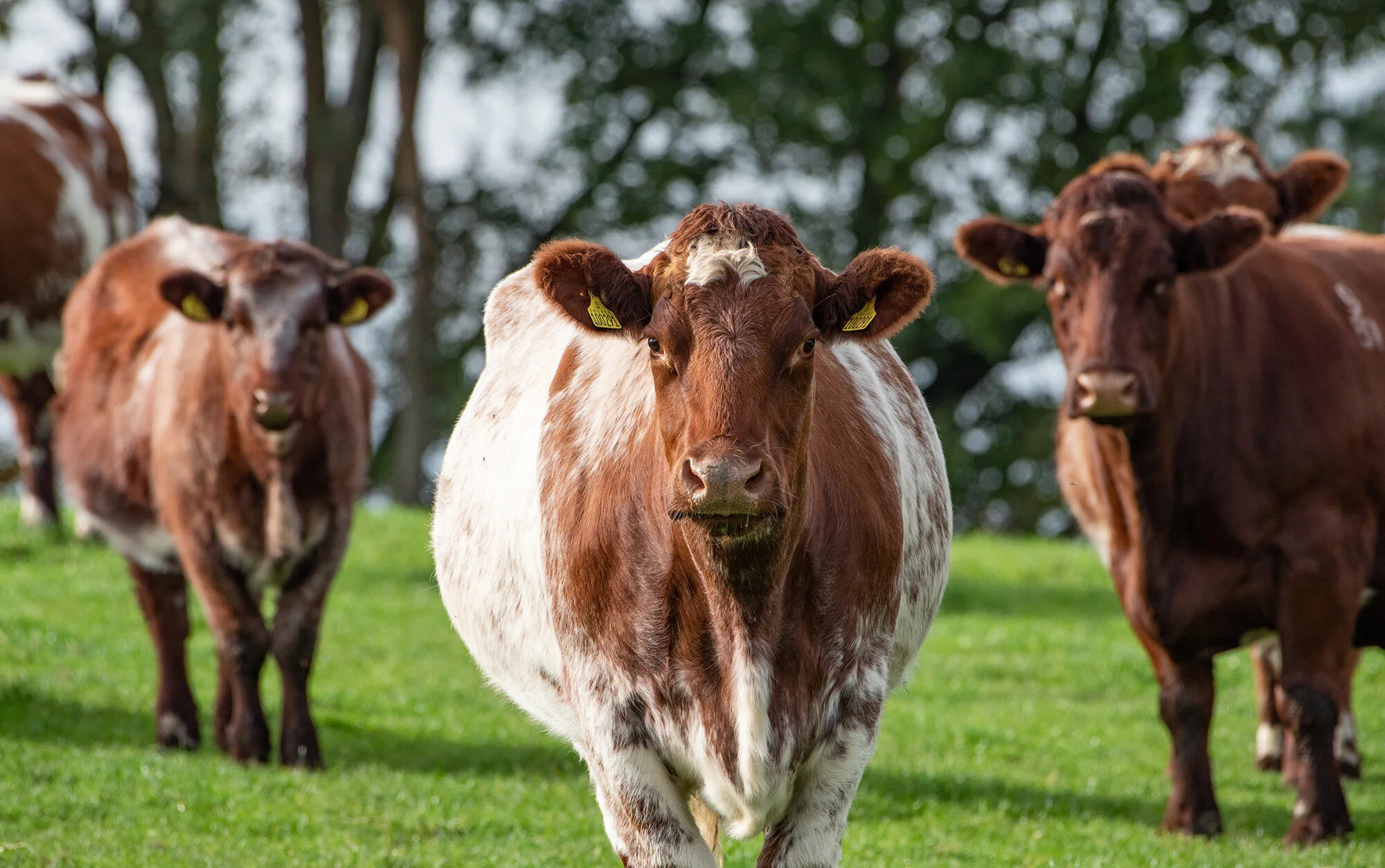Trace element supplementation: AHDB Beef and Lamb Plus+
Inadequate trace element levels can result in production losses, however over supplementation can also end up with costly issues, so achieving the correct balance is vital for your herd to maximise performance. The most economically important trace elements are copper (Cu), cobalt (Co), iodine (I) and selenium (Se).
Trace element availability is influenced by soil type, types of forage, preservation of forage and also by season. Deficiencies can cause poor production, they can vary with age and state - young, pregnant and lactating animals have the greatest need.
Grass and forage widely varies in trace element content due to soil type, pH, drainage, plant species and fertiliser use.
Clay soils generally have higher trace element levels than sandy soils.
Independent testing and advice should be considered before buying and feeding supplements.
Soil testing may reveal gross deficiencies but should only
be used as a guide when considering the trace element status of livestock.
Herbage analysis alone can be misleading and needs careful interpretation.
Blood or tissue testing is the most accurate indicator or mineral status.
Confirm the deficiency diagnosis by monitoring the response to supplementation.
Over-supplementation could cause toxicity or other undesirable interactions in the animal.
Over-supplementation could waste money.
Draw up a monitoring programme with your vet as part of an active health plan.
Geology and soil
The key reason for different trace element deficiencies is variable geology and soils, consequently they are more likely to show up where the ration is mainly grazed grass or conserved forage, such as a spring calving herd fed no concentrates or minerals or store cattle.
In general
Sandy soils contain less trace elements than clay soils
Free draining soil contains less trace elements than poorly drained soil
Soil derived from acid rocks, such as granite, is low in trace elements
Excessive liming will reduce herbage cobalt levels but increase the amount of molybdenum present. The latter can reduce the availability of copper to livestock
The trace element content of plants can vary widely even in the same soil. In general, herbs and weeds have much higher trace element levels than grasses, and clover is generally richer in trace elements than grass.
Re-seeding can reduce trace element intake by reducing the diversity of plants present. Rapidly growing, lush pasture following fertiliser application could also have low trace element content. Encouraging greater sward diversity and incorporating clover can often reduce the need to supplement the diet.
Supplementation
Free-choice minerals are widely used but intake can be variable. The widespread belief that animals are aware of any mineral deficiency and will only take what they need is unproven.
Mineral mixes, licks and block intakes, both between animals in the same group and across breeds and farms is significant. Some animals take little or none at all, others take several times more than they require. Self-help minerals contain a lot of common salt to control intake.
In-feed minerals - compound feeds and balancers are generally well fortified with trace elements, although the level of feeding dictates the amount of trace elements the stock receives. When the concentrate is a mix of straight feeds, it is often prudent to add a mineral supplement at a rate calculated from the recommended daily intake per head.
Drenches are an effective method for ensuring each animal receives the required level of trace elements for optimum performance. Drenches containing iodine and cobalt need to be repeated at regular intervals. Cobalt boluses have been widely used, but stock may suffer from rumen regurgitation or the coating sometimes prevents the cobalt from releasing.
Top dressing pasture provides a longer-term solution to raise the level of trace elements in grassland. This can be effective in the case of simple deficiencies but not where availability is restricted by other factors, such as alkaline soils, however it requires a disciplined approach with accurate records of application rates and timing.
A deficiency state should always be confirmed by independent testing and advice before supplementing stock with extra trace elements.
Copper
An essential part of a number of different enzymes which allow the body to function. The amount of copper that ruminants absorb from the diet is very variable; excess is stored in the liver. Ruminants are susceptible to copper toxicity, either if a very large amount of the element is ingested or injected at one time, or if it accumulates in the liver over a long period of time.
Symptoms: poor growth and scouring, and in extreme cases a thickening of bones around the joints, infertility and ‘spectacling’ of dark coated cattle due to reduced pigmentation of the hair around the eyes.
Diagnosis: analysis of blood samples or preferably liver tissue - a biopsy on live animals, or more commonly slaughtered/ dead animals.
Pasture levels: a deficiency is either primary due to low copper intake, or secondary due to interference of other elements, specifically a three-way interaction between copper, molybdenum and sulphur, which reduces the availability and absorption of copper from the rumen.
Copper is more readily available from cereals and other concentrate feeds than from grass or conserved forage. Compound feeds and minerals formulated for sheep do not have added copper, but cattle feeds and minerals do and should never be fed to sheep.
Prevention: due to the risk of causing toxicity, animals should only be supplemented after laboratory tests confirm that extra copper is needed, and if so added to feed, given orally or by injection. Alternatively, it may be applied to pasture, usually in combination with other trace elements.
Cobalt
An essential component of vitamin B12 which is associated with energy metabolism. Vitamin B12 is produced by rumen micro-organisms which require a regular supply of dietary cobalt. Vitamin B12 is secreted in milk; cobalt is only required as the rumen develops.
Symptoms: ill-thrift accompanied by poor appetite, lethargy.
Prevention: oral drenching raises blood vitamin B12 levels for around seven days. For longer term supplementation, supply cobalt in a rumen bolus, either on its own or in combination with other trace elements could be considered.
Iodine
A component of the important hormone thyroxine which controls the animal’s energy metabolism. It is also essential for foetal growth and development.
Symptoms: enlarged thyroid, commonly known as goiter; late abortions, still-born or weak calves, and retained afterbirths.
Pasture levels: vary depending on species, soil type, fertiliser treatment, climate and season. There is no clear relationship between levels in herbage, rock or soil type. Iodine can be deposited by rainfall, especially when clouds form over seawater; coastal regions have the highest level of pasture iodine.
The typical level in pasture grasses is 0.2-0.3mg/kg DM. Improved grassland usually has higher iodine levels than unimproved - a high percentage of pastures in upland Wales are recognised as being low in iodine.
Prevention: oral drench or in a slow release rumen bolus. Iodine can be applied to pasture in combination with other trace elements. Longterm, excessive use of iodine supplementation can also cause toxicity problems.
Selenium
Acts with vitamin E to protect tissues against oxidation and the breakdown of cell membranes. It is also important for immune function. Requirements are related to the diet’s vitamin E content. Excess selenium is toxic.
Symptoms: poor reproductive performance in females - early embryonic death and retained placenta, and in bulls, impaired fertility.
Diagnosis: usually by blood sampling and measuring levels of the enzyme, glutathione peroxidise.
Pasture levels: Unlike most trace elements, there is a direct relationship between selenium levels in soil, grassland and the animal. So, if soil or pasture levels are known, the likelihood of animals developing a deficiency can be predicted with some confidence.
Different plant species take up different amounts of selenium, for example, clovers contain less than ryegrass. The typical level is 0.06-0.08mg/kg DM. Whilst cattle can grow normally on pastures containing 0.06mg/kg DM, it is widely recommended that the whole diet should contain 0.1mg/kg DM or more. Sulphur can interfere with selenium uptake by plants and over-use can exacerbate a marginal deficiency.
Prevention: oral drenching with selenium salts can provide adequate supplementation for one to three months. A slow release formulation injection can provide up to 12 months supply from a single shot. Selenium can also be given in a rumen bolus, or applied to pasture in combination with other trace elements.



